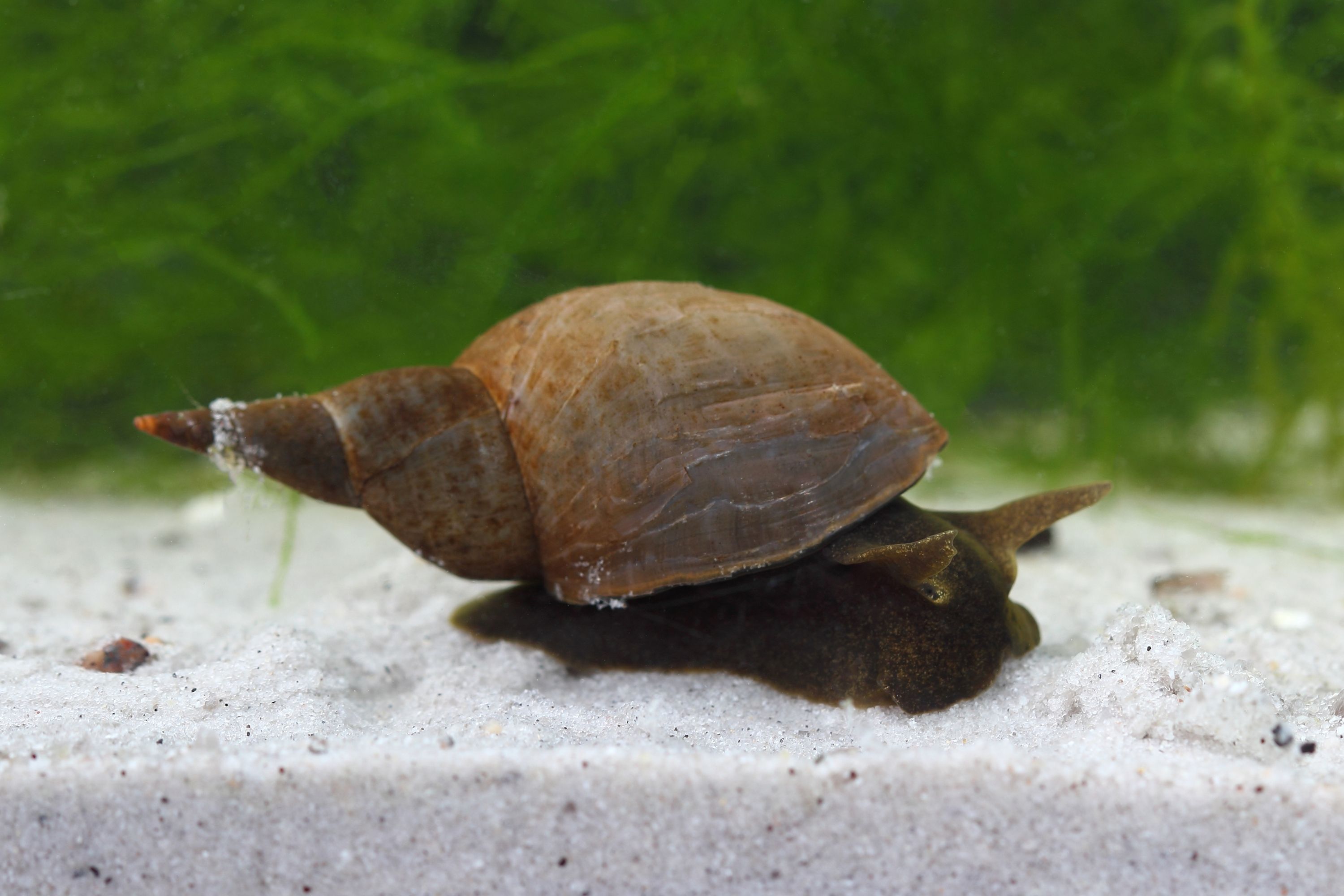Great pond snail
(Lymnaea stagnalis)

Description
Lymnaea stagnalis, better known as the great pond snail, is a species of large air-breathing freshwater snail, an aquatic pulmonate gastropod mollusk in the family Lymnaeidae. The great pond snail is a model organism to study parasitology, neurology, embryonal development and genetic regulation. Limnaea stagnalis var. baltica Lindström, 1868: synonym of Lymnaea stagnalis (Linnaeus, 1758) The distribution of this species is holarctic, mainly the temperate zones of Northern America, Europe and Asia. The snail can be found in many ponds, lakes and very slow-moving rivers with a rich underwater vegetation. The northernmost populations exist in northern Norway, and in Central Europe, it inhabits even montane ecosystems at 1700 meters above sea level. In the Saprobiensystem used in Germany to judge the quality of freshwater biotopes, the species has a value of 1.9 and indicates a biotope with a water quality class II, the second-highest. Lymnaea stagnalis is widely used for the study of learning, memory and neurobiology. Lymnaea stagnalis has a relatively simple central nervous system (CNS) consisting of a total of ~20,000 neurons, many of them individually identifiable, organized in a ring of interconnected ganglia. Most neurons of the Lymnaea stagnalis central nervous system are large in size (diameter: up to ~100 μm), thus allowing electrophysiological dissection of neuronal networks that has yielded profound insights in the working mechanisms of neuronal networks controlling relatively simple behaviors such as feeding, respiration, locomotion, and reproduction. Studies using the central nervous system of Lymnaea stagnalis as a model organism have also identified novel cellular and molecular mechanisms in neuronal regeneration, synapse formation, synaptic plasticity, learning and memory formation, the neurobiology of development and aging, the modulatory role of neuropeptides, and adaptive responses to hypoxic stress. Lymnaea stagnalis is a simultaneously hermaphroditic species and can mate in the male and female role, but within one copulation only one sexual role is performed at a time. Lymnaea stagnalis perform more inseminations in larger groups and prefer to inseminate novel over familiar partners. Such higher motivation to copulate when a new partner is encountered is known as the Coolidge effect and has been demonstrated in hermaphrodites firstly in 2007.
Taxonomic tree:







